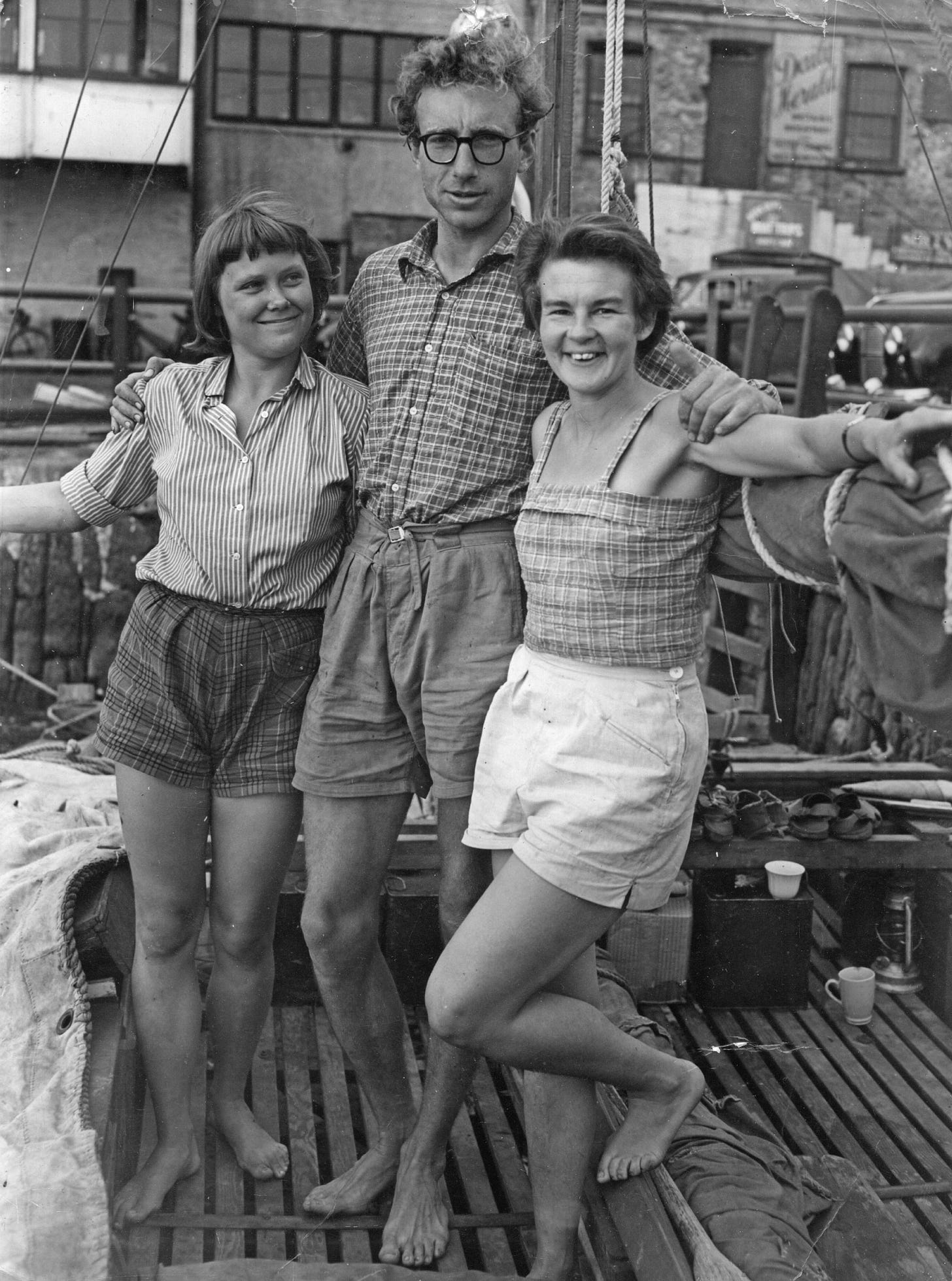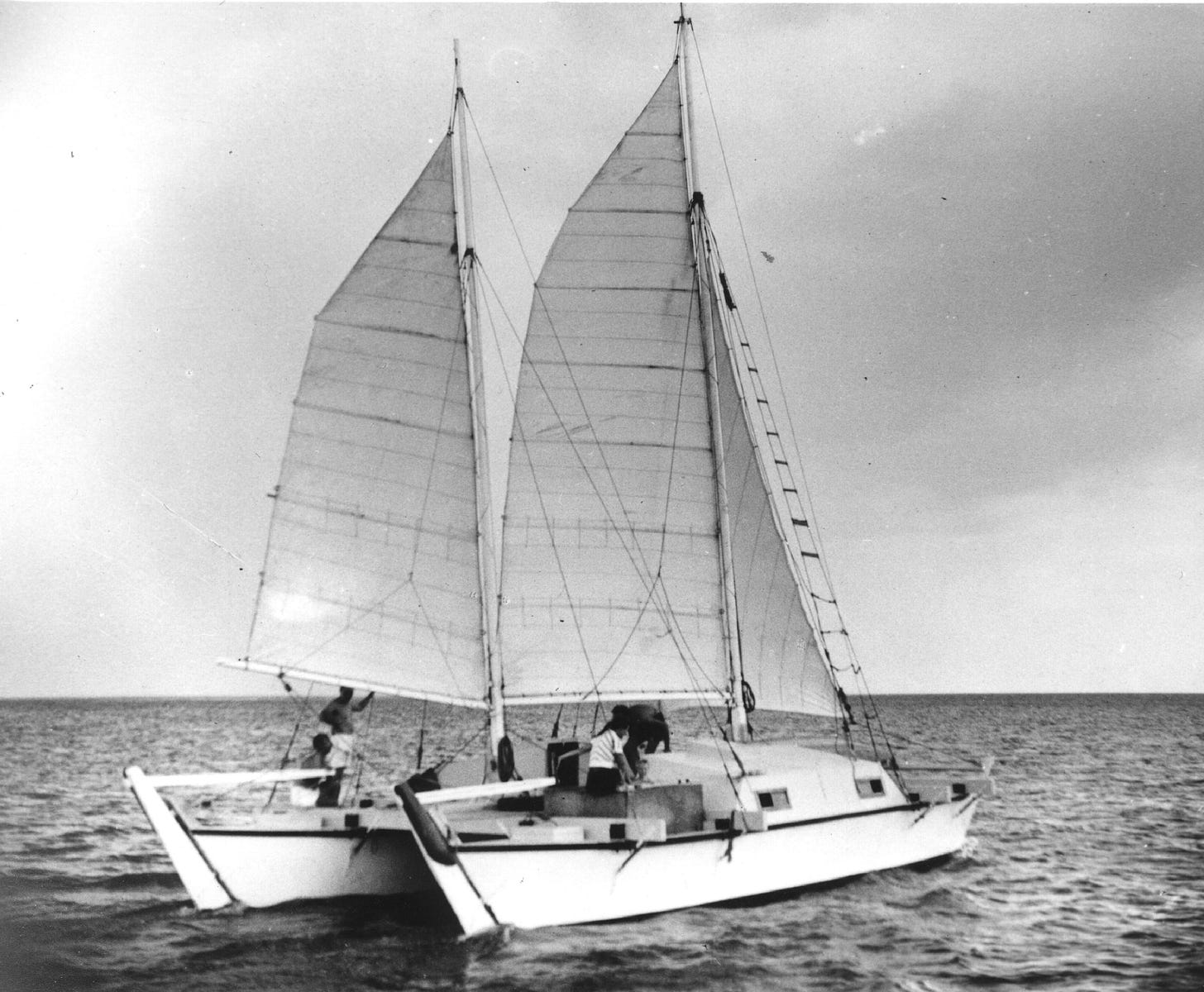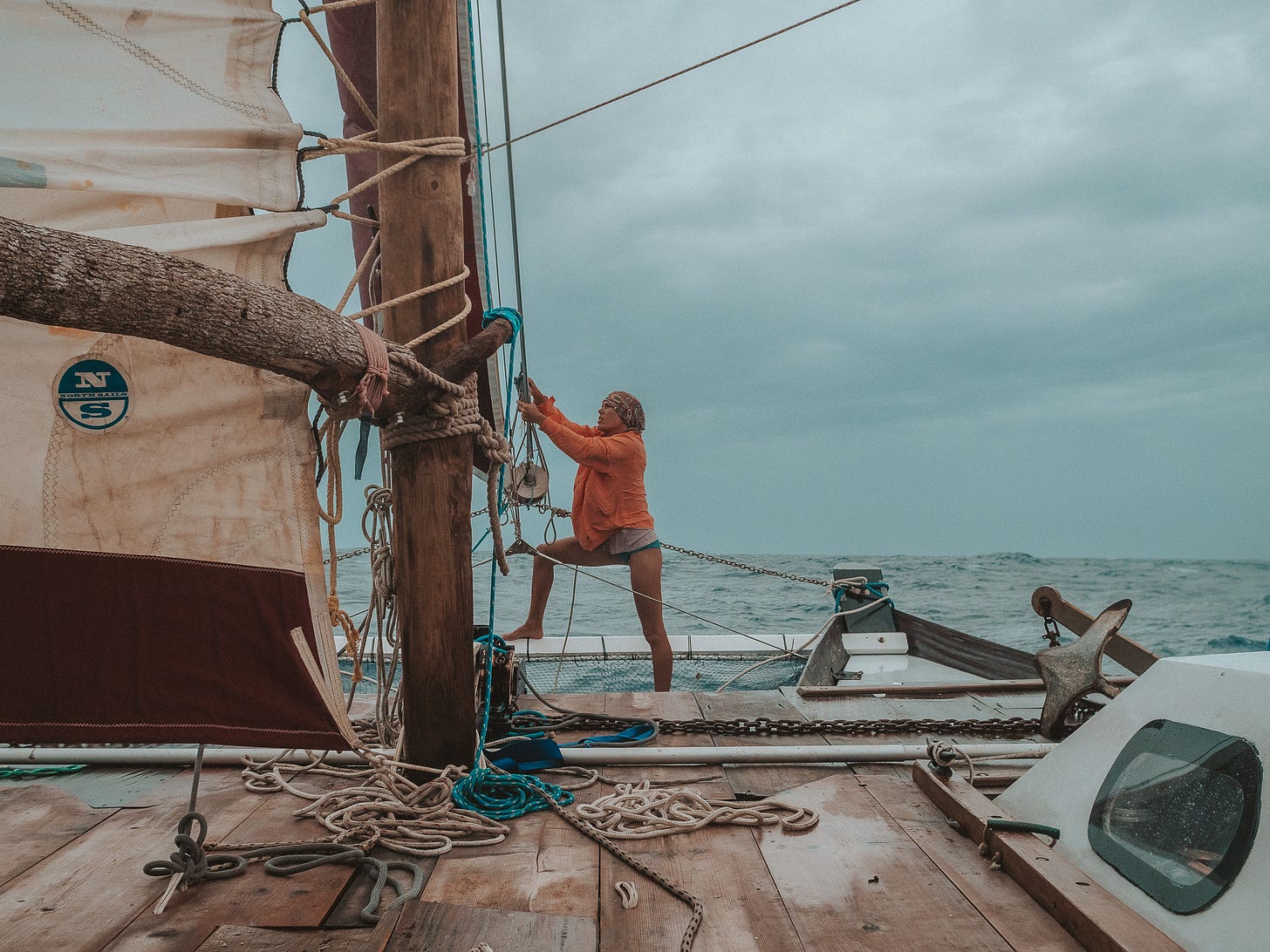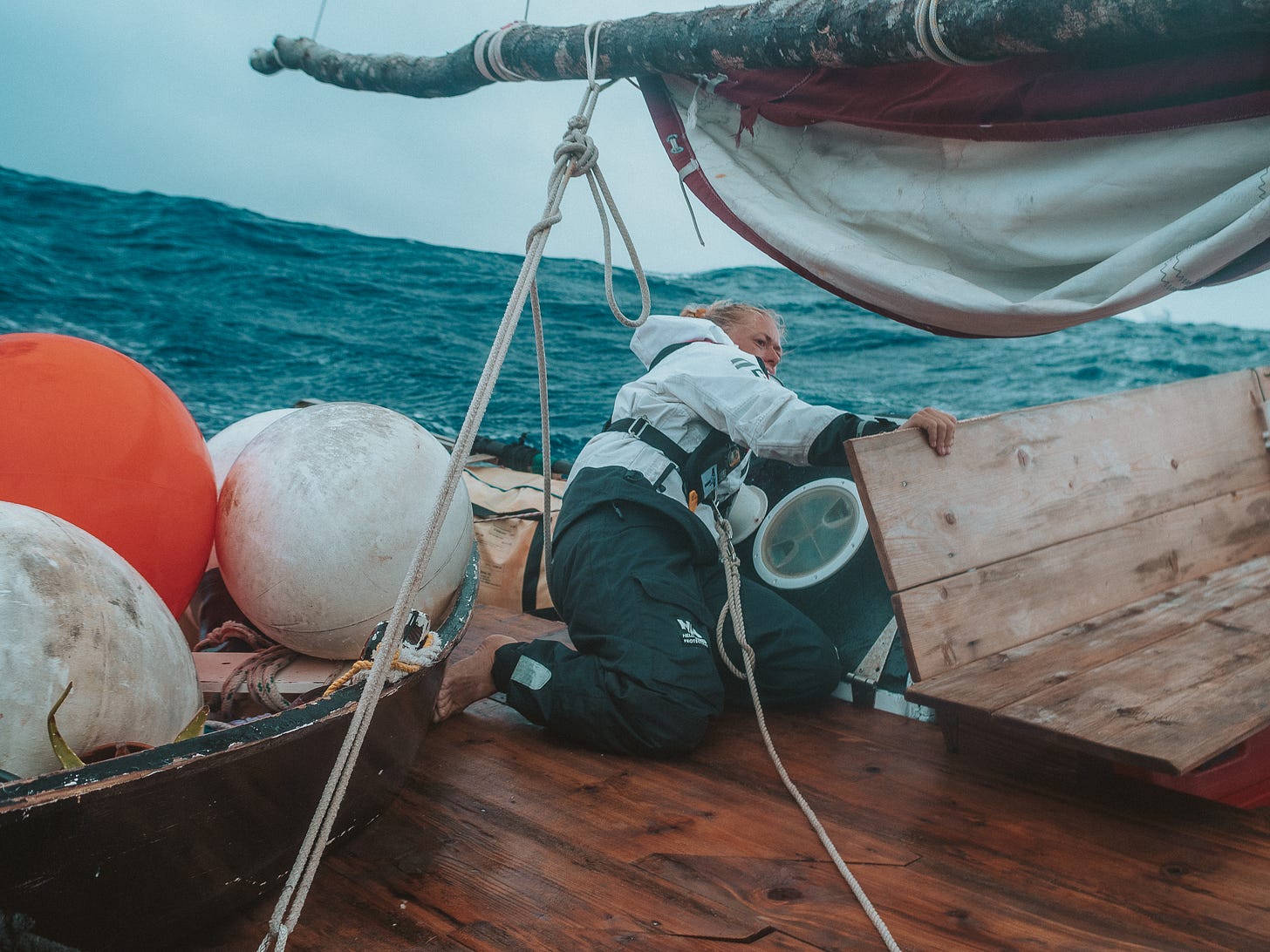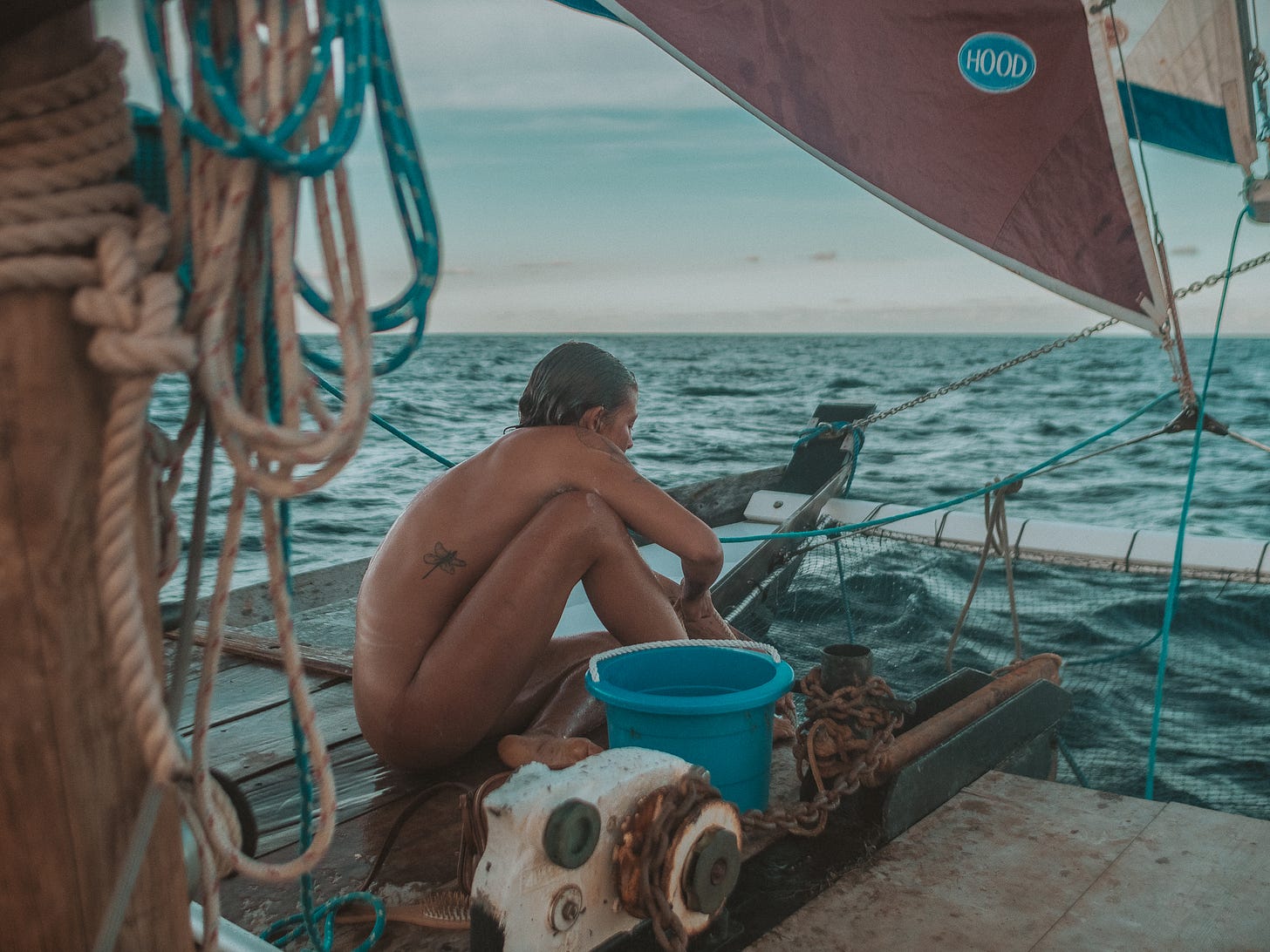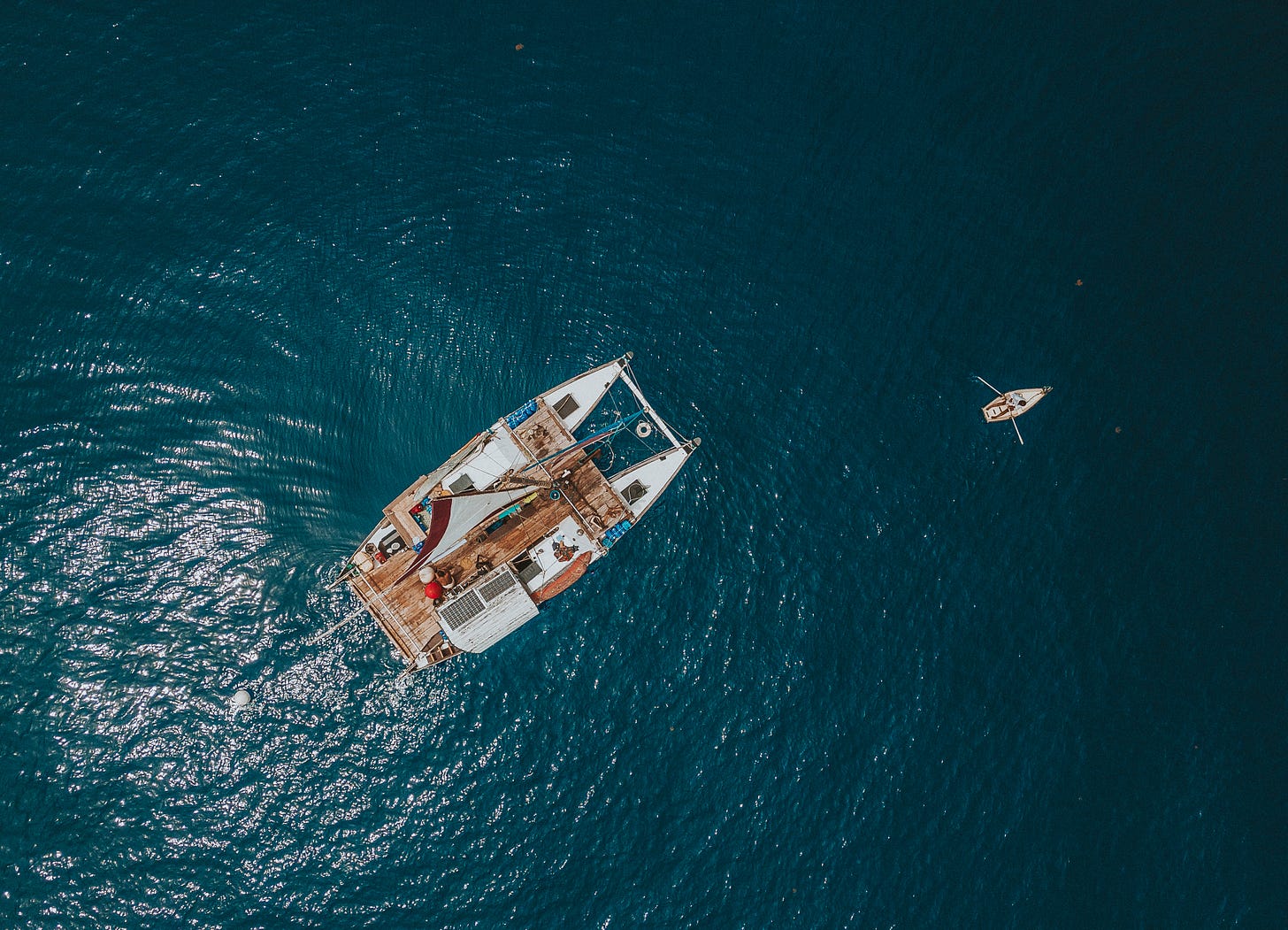Three women, one catamaran, and the North Atlantic Ocean
Set sail with Women & the Wind - host a community screening
The North Atlantic Ocean is an often overlooked stretch of water by sailors setting out on transatlantic voyages.
Vast
Rough
Isolated
James Wharram, along with his two German companions, Jutta Schultze-Rohnhoff and Ruth Merseburger, became the first to successfully sail a self-built, Polynesian-inspired double canoe across the North Atlantic. Their wooden catamaran, Rongo, made the historic West-to-East crossing from Trinidad to Ireland via New York, arriving in 1959. In his book Two Girls Two Catamarans, Wharram recounts this pioneering voyage. Encountering a tremendous and frightening storm, which Ruth identifies as an “ex-tropical cyclone,” Wharram responds to the girls request of “What can we do” wtih “You can try praying…We are now in the god’s hands.”
As the storm rages on, James recounts:
“Crawling back to the cockpit in the vivid lightning flashes, I saw Jutta sitting astride the steering-bench, working the tiller backwards and forwards like a great oar, her long golden hair streaming in the wind like a banner of defiance. She was twenty years old. No one could have handled the ship better. As each wave with its snarling crest leapt at us, Jutta eased our pointed twin sterns into them. The wave parted, then ran down the side of the hulls, hardly checked in speed. So there was no build-up of water pressure to pule up and foam over our decks, sweeping us away.
I crouched at her feet, ready to leap out and attend to any flying ropes, or weakness in the ship. I was soaked to the skin. Ruth brought us coffee or soup every hour. Regularly the hot drink was turned into half salt water as the spray dashed over the ship.
…
The next day was warm. Apart from the heavy swell, the aftermath of the storm, life was like new again. I watched the naked, golden-skinned girls, silhouetted against the blue sea, hanging out heaps of wet clothes…My fear of the sea had gone in the storm.”
So much rises from these words.
The calm after the storm.
The unwavering seaworthiness of Polynesian double canoes.
James’ reverence for the women beside him.
But additional context must ensure some truths are not softened by time: Ruth, a brilliant, self-taught navigator and sailor—calm, nurturing, relentlessly solution-driven. Jutta, who had just given birth to James’ child, her body still echoing the rhythms of creation. These women were not only James’ lifelines but each other’s, bound by salt, wind, and the weight of a voyage few could fathom. It is impossible to imagine James’ crossing—or the course of his life’s work designing double canoes—without Ruth, without Jutta, without the Wharram Women who became the pulse of his vision.
More than sixty years later, Kiana Weltzien, a solo sailor, hoists sail aboard Mara Noka, a 50-year-old Wharram catamaran, a direct descendant of Rongo. She sets out not in pursuit of a first or to be alone (not this time), but in community with two more women, Laerke Heilmann and Alizé Jireh, sailing from Wilmington, North Carolina, to the Azores. Their voyage is both an adventure across the North Atlantic’s vastness AND a following of the pathways of plastics that now drift with the same winds and currents that propel their wooden boat. Their journey becomes Women & the Wind, a film that reaches beyonds the expectations of mainstream documentary—it is a meditation, a hymn to life at sea through a feminine lens.
It is also an echo, a continuation of the Wharram Women legacy, whispering to those who dream of the horizon: design, build, set sail (your author included).
Read: Women & the Wind interview in Field Mag
Women & the Wind reminds us there are still ways to be at remember our wholeness with the Ocean, and now YOU can step aboard Mara Noka as we invite the public to apply to host a screening.
Host a Community Screening
Women & the Wind Documentary is premiering globally on April 19, 2025. To celebrate this milestone and ensure its message reaches as many people as possible, we’re inviting individuals, organizations, and educators to host local screenings alongside our official events.
Hosting a screening of Women & the Wind is a unique opportunity to bring your community together and foster meaningful conversations about the themes explored in the film. Whether you’re a cinema operator, a community leader, or an educator, you can help make this film more accessible to people everywhere.
Half of proceeds from the film are reinvested into the Women & the Wind Foundation, supporting female-led eco-adventure projects through mentorship, resources, and fiscal sponsorship.





